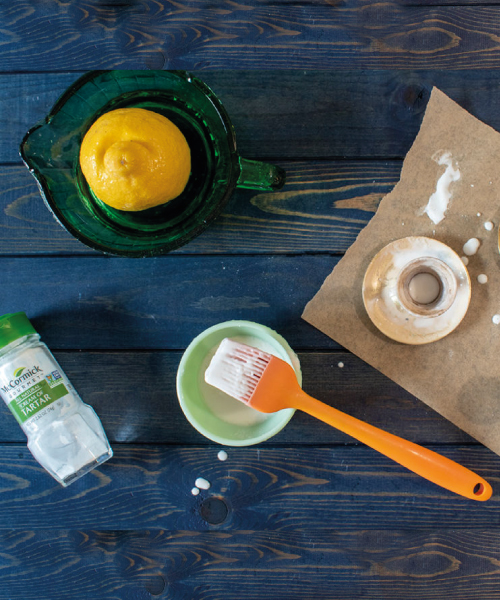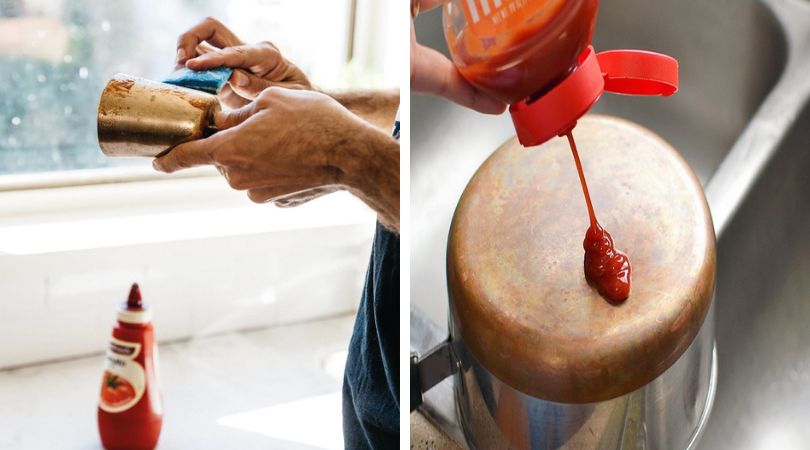Only a few items of brass decor in a room are needed to draw attention to themselves due to the color and sheen they exude. And if you’re going to grab some old brass, you should probably clean it beforehand. However, you may avoid running out to get specialized brass polish because of this simple method. You most likely have a fantastic brass cleaner stashed away somewhere in your cupboards.
The softness of brass makes it susceptible to scratches. Always use a soft cloth, like a piece of cotton flannel or an old t-shirt, while cleaning brass. Scrubbing with a metal scouring pad or an abrasive sponge will leave scratches in the brass.
Lemon Juice and Salt
Pieces with only little tarnish can benefit from this method. Spread some salt on the exposed lemon halves. In order to polish the brass object, use the salted lemon to do so. For best results, let the lemon juice and salt linger for a few minutes before wiping them away with a delicate cloth. Gently buffing it will restore its luster.

Lemon juice and tartar cream
A mixture made from lemon juice and cream of tartar will remove even the most persistent tarnish. Apply the paste to the brass with a clean, soft cloth or a pastry brush. After 10-20 minutes, rinse the brass with warm water to remove any residue. Once the piece is dry, buff it with a soft cloth.

Ketchup
What, no lemons? Grab some ketchup.
Tomatoes’ acidity is quite effective as a tarnish remover. Ketchup is the perfect consistency for decorating candlesticks, sculptures, and bookends.
Apply ketchup on your tarnished brass and let it sit for 5-15 minutes before washing it off with warm water. Once you dry your brass, it will shine like new.

Tomato Juice
Tomato juice is a great alternative to conventional techniques for cleaning complex brass objects where water doesn’t penetrate well. Tomato juice can be used to remove tarnish from inaccessible areas if the entire item is immersed in it.
Depending on how badly tarnished the brass item is, soak it in the tomato juice for 10-30 minutes. Once every few minutes, check in to see how things are coming along. If the brass gets stained by tomato juice, just wash it and pat it dry.

Flour, Salt and Vinegar
Blend together a pinch of salt and a quarter cup of vinegar. Now, add enough flour to form a paste and mix thoroughly. You need it to be substantial enough to cling to the metal. Spread the paste over the brass object and leave it alone for 5-15 minutes, depending on how grimy the brass is.
Remove the paste by rinsing the brass and drying it with a soft towel.

Baking soda and tin foil
It’s one of the simplest ways to restore the shine to brass.
Prepare a bowl or baking dish by lining it with foil, shiny side up. Spread baking soda out in a thick layer on the dish’s bottom. Now you need to submerge your brass pieces in hot water, so place them in a dish and fill it up.
15 minutes should be enough time to submerge the object.
The tarnish will be released from the brass and adhere to the aluminum foil in a tidy chemical process (which I am horrible at explaining). A second soak in this solution may be necessary for especially tarnished pieces. In the same way, silver can be treated in this way.
Keep It Shiny
After polishing your brass, keep it looking like new by applying a thin layer of mineral oil or boiling linseed oil. Wipe off any extra oil with a clean rag and buff your piece to perfection.
Never apply boiled linseed oil to a serving piece; instead, use mineral oil meant for consumption, such as that which is used to condition wooden cutting boards or as a laxative.
If you coat your item in oil, it will be protected from the oils in your hands and from the oxidation that occurs when air comes into contact with brass.


